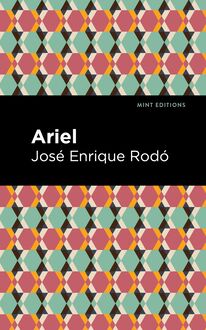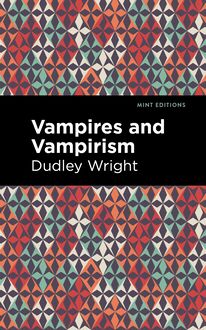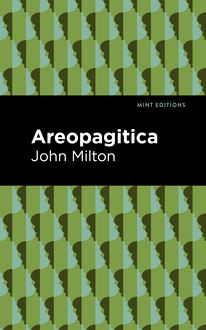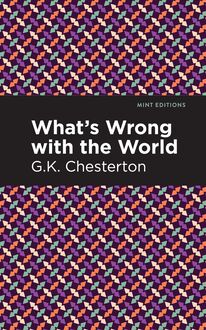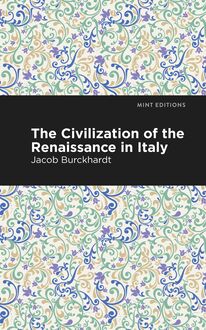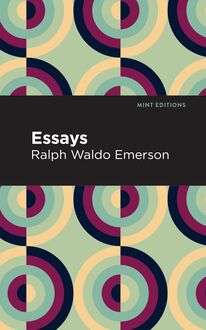-
 Univers
Univers
-
 Ebooks
Ebooks
-
 Livres audio
Livres audio
-
 Presse
Presse
-
 Podcasts
Podcasts
-
 BD
BD
-
 Documents
Documents
-
- Cours
- Révisions
- Ressources pédagogiques
- Sciences de l’éducation
- Manuels scolaires
- Langues
- Travaux de classe
- Annales de BEP
- Etudes supérieures
- Maternelle et primaire
- Fiches de lecture
- Orientation scolaire
- Méthodologie
- Corrigés de devoir
- Annales d’examens et concours
- Annales du bac
- Annales du brevet
- Rapports de stage
La lecture à portée de main
Vous pourrez modifier la taille du texte de cet ouvrage
Découvre YouScribe en t'inscrivant gratuitement
Je m'inscrisDécouvre YouScribe en t'inscrivant gratuitement
Je m'inscrisEn savoir plus
Vous pourrez modifier la taille du texte de cet ouvrage
En savoir plus

Description
The Civilization of the Renaissance in Italy (1860) is a work of art history by Swiss historian Jacob Burckhardt. Recognized today as the founder of modern art history and as one of the key thinkers of the nineteenth century, Burckhardt changed not only the way we think about the Renaissance in relation to European and world history, but the value placed on art as a tool for understanding historical developments.
The Civilization of the Renaissance in Italy begins with a section on the historical events which sparked the Renaissance, focusing especially on the frequent military conflicts which marred the era as well as on the constant political upheavals undergone by such Italian regions and cities as Rome, Venice, and Florence. Burckhardt then moves to a philosophical discussion of the development of individuality in Italian culture, arguing that the political circumstances of those living in the Republics enabled such thinkers as Dante and Petrarch to create art that corresponded with that newfound sense of individuality. The third section discusses one of the key elements of Renaissance culture: the revival of interest in the cultural products of the ancient world, especially Greece and Rome. Part four focuses on the prominence of discovery in Renaissance culture, for which Burckhardt looks to the colonial expedition of Columbus, the growth of the natural sciences, and the achievements of such poets and writers as Dante, Petrarch, and Boccaccio in discovering new ways to describe humanity and the human spirit. In the fifth section, the importance of societal customs and festivals is discussed, and in the sixth and final part, Burckhardt observes the profound shifts undergone by religion and morality in Italy at the time.
The Civilization of the Renaissance in Italy is a thorough, dynamic work of art history that not only changed the study of history at universities around the world, but elevated the status of art in understanding the process of cultural change.
With a beautifully designed cover and professionally typeset manuscript, this edition of Jacob Burckhardt’s The Civilization of the Renaissance in Italy is a classic of European art history reimagined for modern readers.
Sujets
Informations
| Publié par | Mint Editions |
| Date de parution | 01 décembre 2020 |
| Nombre de lectures | 0 |
| EAN13 | 9781513273754 |
| Langue | English |
| Poids de l'ouvrage | 2 Mo |
Informations légales : prix de location à la page 0,0500€. Cette information est donnée uniquement à titre indicatif conformément à la législation en vigueur.
Extrait
The Civilization of the Renaissance in Italy
Jacob Burckhardt
The Civilization of the Renaissance in Italy was first published in 1860.
This edition published by Mint Editions 2021.
ISBN 9781513268750 | E-ISBN 9781513273754
Published by Mint Editions®
minteditionbooks.com
Publishing Director: Jennifer Newens
Design & Production: Rachel Lopez Metzger
Translated by: S.G.C.
Typesetting: Westchester Publishing Services
C ONTENTS P ART 1. T HE S TATE AS A W ORK OF A RT 1. I NTRODUCTION 2. T HE T YRANNY OF THE F OURTEENTH C ENTURY 3. T HE T YRANNY OF THE F IFTEENTH C ENTURY 4. T HE P ETTY T YRANNIES 5. T HE G REATER D YNASTIES 6. T HE O PPONENTS OF T YRANNY 7. T HE R EPUBLICS : V ENICE AND F LORENCE 8. T HE F OREIGN P OLICY OF THE I TALIAN S TATES 9. W AR AS A W ORK OF A RT 10. T HE P APACY AND ITS D ANGERS P ART 2. T HE D EVELOPMENT OF THE I NDIVIDUAL 1. T HE I TALIAN S TATE AND THE I NDIVIDUAL 2. T HE P ERFECTING OF THE I NDIVIDUAL 3. T HE M ODERN I DEA OF F AME 4. M ODERN W IT AND S ATIRE P ART 3. T HE R EVIVAL OF A NTIQUITY 1. I NTRODUCTORY R EMARKS 2. R OME , THE C ITY OF R UINS 3. T HE O LD A UTHORS 4. H UMANISM IN THE F OURTEENTH C ENTURY 5. T HE U NIVERSITIES AND S CHOOLS 6. T HE F URTHERERS OF H UMANISM 7. T HE R EPRODUCTION OF A NTIQUITY : L ATIN C ORRESPONDENCE AND O RATIONS 8. L ATIN T REATISES AND H ISTORY 9. G ENERAL L ATINISATION OF C ULTURE 10. M ODERN L ATIN P OETRY 11. F ALL OF THE H UMANISTS IN THE S IXTEENTH C ENTURY P ART 4. T HE D ISCOVERY OF THE W ORLD AND OF M AN 1. J OURNEYS OF THE I TALIANS 2. N ATURAL S CIENCE IN I TALY 3. T HE D ISCOVERY OF N ATURAL B EAUTY 4. T HE D ISCOVERY OF M AN . S PIRITUAL D ESCRIPTION IN P OETRY 5. B IOGRAPHY 6. T HE D ESCRIPTION OF N ATIONS AND C ITIES 7. D ESCRIPTION OF THE O UTWARD M AN 8. D ESCRIPTIONS OF L IFE IN M OVEMENT P ART 5. S OCIETY AND F ESTIVALS 1. T HE E QUALISATION OF C LASSES 2. T HE O UTWARD R EFINEMENT OF L IFE 3. L ANGUAGE AS THE B ASIS OF S OCIAL I NTERCOURSE 4. T HE H IGHER F ORMS OF S OCIETY 5. T HE P ERFECT M AN OF S OCIETY 6. T HE P OSITION OF W OMEN 7. D OMESTIC E CONOMY 8. T HE F ESTIVALS P ART 6. M ORALITY AND R ELIGION 1. M ORALITY 2. R ELIGION IN D AILY L IFE 3. R ELIGION AND THE S PIRIT OF THE R ENAISSANCE 4. M IXTURE OF A NCIENT AND M ODERN S UPERSTITION 5. G ENERAL D ISINTEGRATION OF B ELIEF
PART 1
THE STATE AS A WORK OF ART
Chapter 1
I NTRODUCTION
T his work bears the title of an essay in the strictest sense of the word. No one is more conscious than the writer with what limited means and strength he has addressed himself to a task so arduous. And even if he could look with greater confidence upon his own researches, he would hardly thereby feel more assured of the approval of competent judges. To each eye, perhaps, the outlines of a given civilization present a different picture; and in treating of a civilization which is the mother of our own, and whose influence is still at work among us, it is unavoidable that individual judgment and feeling should tell every moment both on the writer and on the reader. In the wide ocean upon which we venture, the possible ways and directions are many; and the same studies which have served for this work might easily, in other hands, not only receive a wholly different treatment and application, but lead also to essentially different conclusions. Such indeed is the importance of the subject, that it still calls for fresh investigation, and may be studied with advantage from the most varied points of view. Meanwhile we are content if a patient hearing be granted us, and if this book be taken and judged as a whole. It is the most serious difficulty of the history of civilization that a great intellectual process must be broken up into single, and often into what seem arbitrary categories, in order to be in any way intelligible. It was formerly our intention to fill up the gaps in this book by a special work on the “Art of the Renaissance,”—an intention, however, which we have been able only to fulfil in part.
The struggle between the Popes and the Hohenstaufen left Italy in a political condition which differed essentially from that of other countries of the West. While in France, Spain and England the feudal system was so organised that, at the close of its existence, it was naturally transformed into a unified monarchy, and while in Germany it helped to maintain, at least outwardly, the unity of the empire, Italy had shaken it off almost entirely. The Emperors of the fourteenth century, even in the most favourable case, were no longer received and respected as feudal lords, but as possible leaders and supporters of powers already in existence; while the Papacy, with its creatures and allies, was strong enough to hinder national unity in the future, not strong enough itself to bring about that unity. Between the two lay a multitude of political units—republics and despots—in part of long standing, in part of recent origin, whose existence was founded simply on their power to maintain it. In them for the first time we detect the modern political spirit of Europe, surrendered freely to its own instincts, often displaying the worst features of an unbridled egoism, outraging every right, and killing every germ of a healthier culture. But, wherever this vicious tendency is overcome or in any way compensated, a new fact appears in history—the state as the outcome of reflection and calculation, the state as a work of art. This new life displays itself in a hundred forms, both in the republican and in the despotic states, and determines their inward constitution, no less than their foreign policy. We shall limit ourselves to the consideration of the completer and more clearly defined type, which is offered by the despotic states.
The internal condition of the despotically governed states had a memorable counterpart in the Norman Empire of Lower Italy and Sicily, after its transformation by the Emperor Frederick II Bred amid treason and peril in the neighbourhood of the Saracens, Frederick, the first ruler of the modern type who sat upon a throne, had early accustomed himself, both in criticism and action, to a thoroughly objective treatment of affairs. His acquaintance with the internal condition and administration of the Saracenic states was close and intimate; and the mortal struggle in which he was engaged with the Papacy compelled him, no less than his adversaries, to bring into the field all the resources at his command. Frederick’s measures (especially after the year 1231) are aimed at the complete destruction of the feudal state, at the transformation of the people into a multitude destitute of will and of the means of resistance, but profitable in the utmost degree to the exchequer. He centralised, in a manner hitherto unknown in the West, the whole judicial and political administration by establishing the right of appeal from the feudal courts, which he did not, however, abolish, to the imperial judges. No office was henceforth to be filled by popular election, under penalty of the devastation of the offending district and of the enslavement of its inhabitants. Excise duties were introduced; the taxes, based on a comprehensive assessment, and distributed in accordance with Mohammedan usages, were collected by those cruel and vexatious methods without which, it is true, it is impossible to obtain any money from Orientals. Here, in short, we find, not a people, but simply a disciplined multitude of subjects; who were forbidden, for example, to marry out of the country without special permission, and under no circumstances were allowed to study abroad. The University of Naples was the first we know of to restrict the freedom of study, while the East, in these respects at all events, left its youth unfettered. It was after the example of Mohammedan rulers that Frederick traded on his own account in all parts of the Mediterranean, reserving to himself the monopoly of many commodities, and restricting in various ways the commerce of his subjects. The Fatimite Caliphs, with all their esoteric unbelief, were, at least in their earlier history, tolerant of the differences in the religious faith of their people; Frederick, on the other hand, crowned his system of government by a religious inquisition, which will seem the more reprehensible when we remember that in the persons of the heretics he was persecuting the representatives of a free municipal life. Lastly, the internal police, and the kernel of the army for foreign service, was composed of Saracens who had been brought over from Sicily to Nocera and Luceria—men who were deaf to the cry of misery and careless of the ban of the Church. At a later period the subjects, by whom the use of weapons had long been forgotten, were passive witnesses of the fall of Manfred and of the seizure of the government by Charles of Anjou; the latter continued to use the system which he found already at work.
At the side of the centralising Emperor appeared an usurper of the most peculiar kind: his vicar and son-in-law, Ezzelino da Romano. He stands as the representative of no system of government or administration, for all his activity was wasted in struggles for supremacy in the eastern part of Upper Italy; but as a political type he was a figure of no less importance for the future than his imperial protector Frederick. The conquests and usurpations which had hitherto taken place in the Middle Ages rested on real or pretended inheritance and other such claims, or else were effected against unbelievers and excommunicated persons. Here for the first time the attempt was openly made to found a throne by wholesale murder and endless barbarities, by the adoption, in short, of any means with a view to nothing but the end pursued. None of his successor
-
 Univers
Univers
-
 Ebooks
Ebooks
-
 Livres audio
Livres audio
-
 Presse
Presse
-
 Podcasts
Podcasts
-
 BD
BD
-
 Documents
Documents
-
Jeunesse
-
Littérature
-
Ressources professionnelles
-
Santé et bien-être
-
Savoirs
-
Education
-
Loisirs et hobbies
-
Art, musique et cinéma
-
Actualité et débat de société
-
Jeunesse
-
Littérature
-
Ressources professionnelles
-
Santé et bien-être
-
Savoirs
-
Education
-
Loisirs et hobbies
-
Art, musique et cinéma
-
Actualité et débat de société
-
Actualités
-
Lifestyle
-
Presse jeunesse
-
Presse professionnelle
-
Pratique
-
Presse sportive
-
Presse internationale
-
Culture & Médias
-
Action et Aventures
-
Science-fiction et Fantasy
-
Société
-
Jeunesse
-
Littérature
-
Ressources professionnelles
-
Santé et bien-être
-
Savoirs
-
Education
-
Loisirs et hobbies
-
Art, musique et cinéma
-
Actualité et débat de société
- Cours
- Révisions
- Ressources pédagogiques
- Sciences de l’éducation
- Manuels scolaires
- Langues
- Travaux de classe
- Annales de BEP
- Etudes supérieures
- Maternelle et primaire
- Fiches de lecture
- Orientation scolaire
- Méthodologie
- Corrigés de devoir
- Annales d’examens et concours
- Annales du bac
- Annales du brevet
- Rapports de stage
